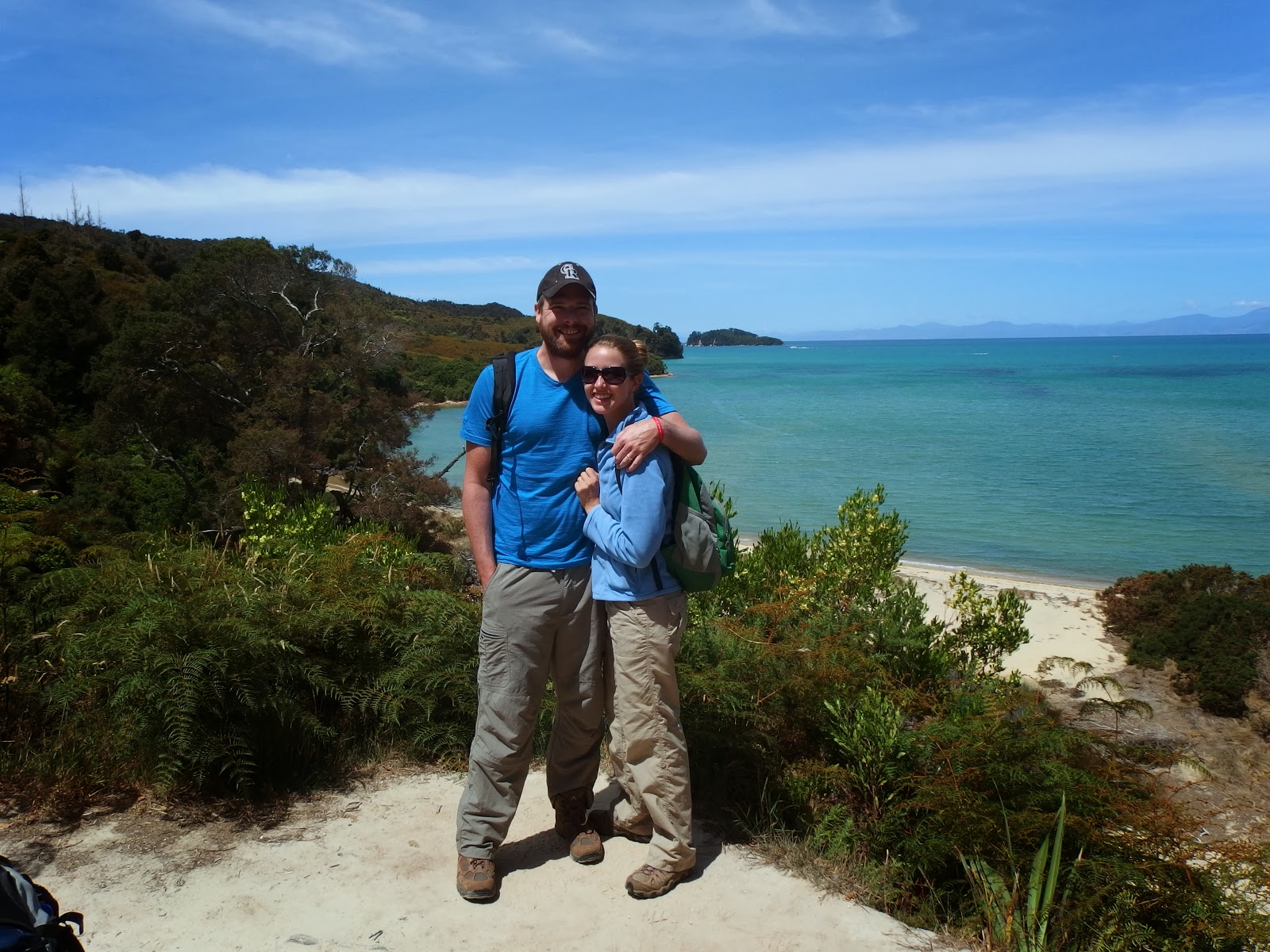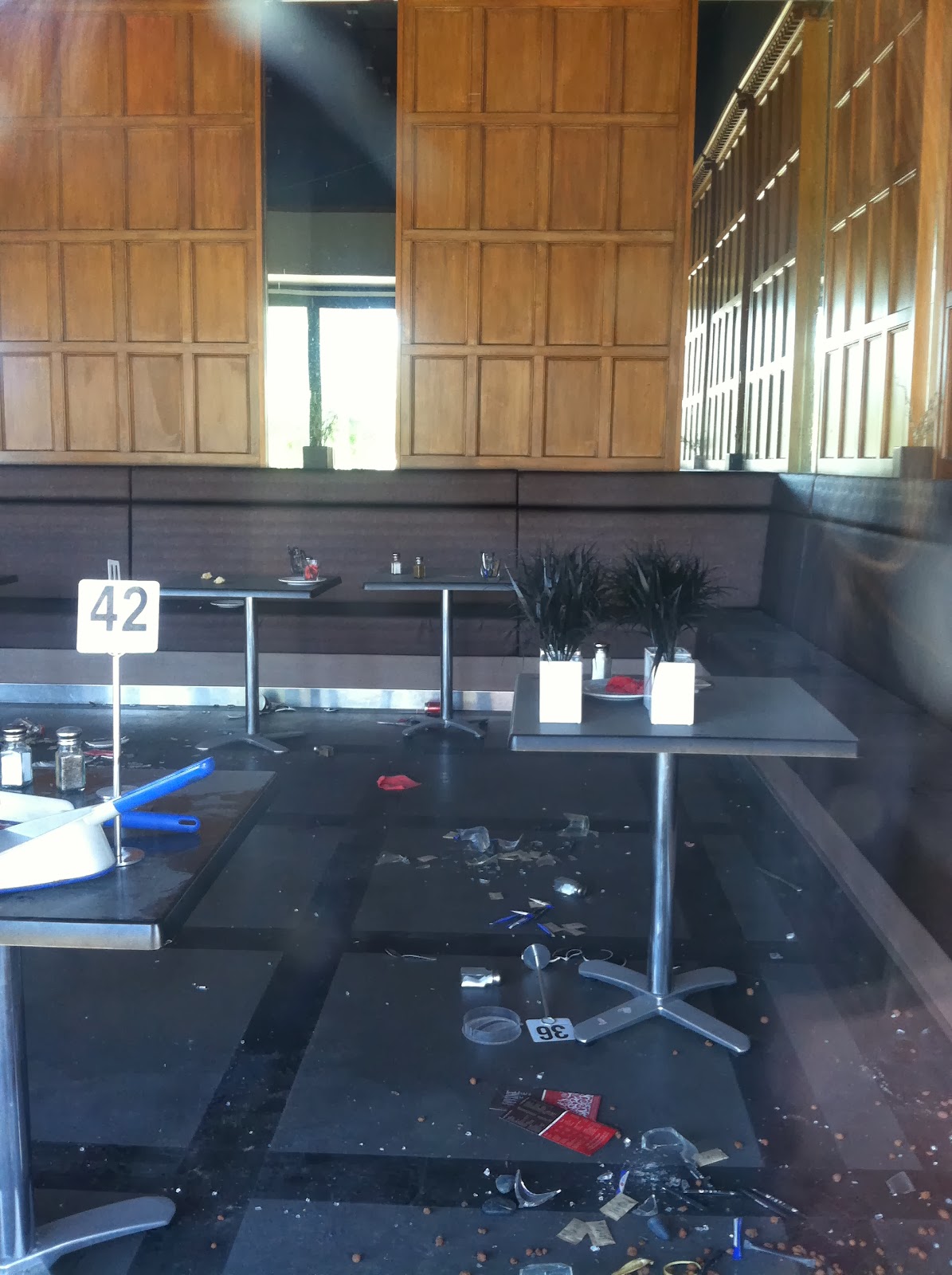Our car!
We left Christchurch and headed east to Akaroa where we saw the world's smallest dolphin. Since it's summer below the equator, we were fortunate to get to see the dolphins with their pups.
Now you can say that you've seen the world's smallest dolphin, too!
What a sunset, huh?!?!
Then we headed inland (and slightly southwest) to Lake Tekapo and Mt. Cook. Because of all the cloud cover and the likelihood of rain, we didn't climb Mt. Cook and instead settled for looking at the nearby glacier. Bummer, huh?
Just some free poo along the road (the sign is pointing to manure...not Brian).
These "weeds" lined the road for kilometers. I loved them!
Those are glacier chunks behind us.
The color of Lake Tekapo was breathtaking.
After a stunning drive from Mt. Cook, we headed southeast to Oamaru and penguins! We got to watch rafts of penguins swim in to shore and make their way to their nests. It was hilarious to see them hop up the rocks and then make a waddling dash to their next hiding place. If anyone needs ideas for what to get me for my birthday, I'll take a penguin. (Unfortunately, we couldn't take pictures of them up close because it scares them so you'll just have to trust me when I say they are awfully cute.)
You know a town is serious about their penguins when they've got penguin crossing signs.
Since we don't have pictures of the penguins, here's one of the many lambs we saw on our drive to Oamaru. They're pretty cute as well.
Dunedin was our next stop and then we continued the drive south through the Catlins (it's an area, not a city) to Invercragill. For us, the drives were often more exciting than our final destination for the day. In the Catlins, we got to see the yellow-eyed penguin, the rarest penguin in the world, up close and personal.
One of the many beaches we passed along the way to Dunedin.
Brian will take penguins over monkeys any day.
The yellow-eyed penguin.
Another pit stop during our drive to Invercargill.
Having reached the bottom of the south island, we started to head north again to Te Anau. There we got to do some great hiking. New Zealand has these hikes called the Great Walks. They take a couple of days. We didn't plan well enough to be able to do any of the Great Walks, but we did get to hike on parts of the trails...so that's kind of like doing the Great Walks ;-)
Brian being manly.
On the Kepler Track.
At Key Summit on the Routeburn track.
Continuing our drive north along the western side of the south island, we stopped in Queenstown and Arrowtown. A number of scenes from Lord of the Rings were shot in that area so naturally Brian and I went to see The Hobbit in Arrowtown. Then it was off to Wanaka. The first time Brian told someone we were headed to Wanaka (pronounced Wah-nah-kah), he pronounced it Wayne-kah and everyone thought he said "Wanker." Oops. Thankfully Kiwis (NZ citizens) have a great sense of humor and Brian's mispronounciation resulted in us being invited to dinner so they could more of our American accents.
At the theater in Arrowtown. Easily the coolest theater we've ever been to.
NZ lost a tenth of its population in WWI (one of the highest casualty rates per capita of any country), so just about every town has memorials to the men it lost in battle. This is the one in Queenstown.
Anyone recognize this from Lord of the Rings? (Hint: It's in the first film and the scene is with Elijah Woods and Liv Tyler)
We found Rocky Mountain! Just one mountain though...
At the top of Rocky Mountain.
It was a good thing we'd been doing a lot of hiking because our next stop was Franz Josef, where we hiked a GLACIER! This was undoubtedly the highlight of our time in New Zealand and one of the most magical experiences of my life to date (marrying Brian was another...). Our guide had taken a break from glacier guiding for three years. When he returned in 2013, he was shocked to find that the guiding company was no longer hiking to the glacier but instead flying people onto it because it had receded that drastically.
Brian suiting up.
Getting briefed on how to walk with crampons on. To get some perspective on how big the glacier is, look for the other group behind our guide's head.
Just hanging out on glacier.
We left Franz Josef and went from glaciers to beaches in just a day. We continued our drive north with a night in Westport to break up the trip to Motueka and Abel Tasman National Park. After doing another (part) of the Great Walks, we left for Picton where we caught the ferry on Christmas day from the south island to the north island.
Hello sand and sunshine!
Brian being manly. Again.
Merry Christmas!
Our first stop on New Zealand's north island was Wanganui and then we headed to Rotorua. In Rotorua, we visited geothermal sites and a Maori village where we fortunate enough to get to see a cultural performance and eat a traditionally prepared meal.
Enjoying the sights (but not the smells) at Wai-o-Tapu Thermal Wonderland.
More of Brian's manliness.
Performers at Whawarekarewa. Maori still live in the village and the performers are all descendants of the village. We got to see a haka and also learned that Maori greet others by pressing noses together twice -- doing so forces a closeness. Pretty cool.
Villagers use the geothermal activity to cook their food. So much better than ovens or crockpots!
With the exception of the gravy, this whole meal was prepared using the method above. It was fantastic!
Villagers use the water from this natural pool to bathe. Because of all the good stuff in the water (I'm not a scientist - sorry!), Maori rarely have skin problems. How awesome is that?!
And now Brian and I are chilling in Auckland, waiting for 2014 and our flight to Australia on New Year's day.
New Zealand has done more than just stun us with its beauty. This country that is home to more than sheep than people has made nature's fragility painstakingly clear. There's a hole in the ozone above New Zealand. A foreign algae is threatening the rivers. Native species are endangered because of rodents brought here. The glaciers are disappearing. It's both sobering and motivating to think that our children (if we're blessed to have kiddos) won't be able to see what we've seen or go where we've gone unless we make a stronger effort to preserve and conserve.
Before we sign off from NZ, we want to send this message out to everyone:
We hope your year gets off to an amazing start!






























































